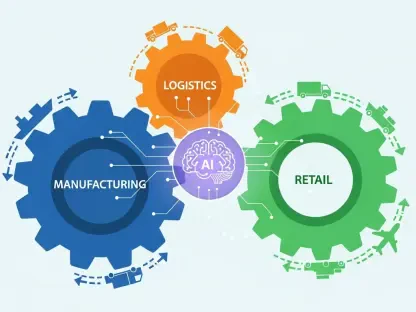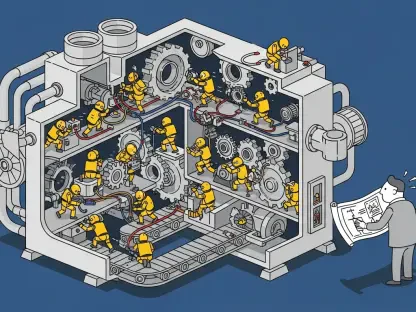The healthcare industry is witnessing a remarkable transformation with the integration of artificial intelligence, specifically in mammography solutions. As breast cancer remains a leading health concern, the advent of AI-powered technologies promises significant advancements in early detection and management. This review delves into the strategic collaboration between iCAD and Microsoft, examining the enhancements brought to mammography imaging, diagnostic processes, and how this partnership is reshaping cancer care through AI-driven insights.
The Rise of AI in Mammography Imaging
Artificial intelligence has revolutionized the way mammography imaging functions, dramatically improving its accuracy and efficiency. Integrating AI into mammography allows healthcare providers to prioritize early cancer detection, a crucial aspect of managing breast health. These sophisticated systems are designed to analyze and interpret mammographic data rapidly, offering significant advancements over traditional methods. This technology becomes even more critical in reading dense breast tissue, where traditional methods face challenges.
Central to AI-powered mammography is the deployment of deep learning convolutional neural networks (CNNs). The contribution of these networks to the healthcare sector is profound, as they enhance the detection and characterization of potential cancerous tissues. CNNs provide a robust framework for processing the intricate details found in diagnostic images, learning from each scan to continually improve accuracy. The application of these technical algorithms showcases AI’s transformative power in the real-world scenario of breast cancer detection.
Strategic Partnerships and Innovative Developments
A pivotal move in the sector includes iCAD’s collaboration with Microsoft, which introduces the ProFound Breast Health Suite to Microsoft’s Precision Imaging Network. This alliance facilitates the provision of cloud-hosted AI insights to radiologists and healthcare providers nationwide. Backbone integration with Microsoft’s PowerScribe platform ensures automated reporting, enabling seamless workflows for US radiologists. Such technological convergence streamlines the reporting process, reducing manual tasks, and standardizing diagnostic language for improved accuracy.
Recent advancements exemplified by iCAD’s ProFound Detection Version 4.0—an FDA-cleared technology—leverage AI to further refine breast cancer diagnostics. By incorporating prior examinations, this solution tailors personalized screening, optimizing outcomes in digital breast tomosynthesis (DBT) exams. As the sector evolves, the partnership signifies a key shift in enhancing cancer detection through advanced AI capabilities, improving the precision to identify aggressive cancer subtypes in dense breasts.
Practical Applications and Industry Influence
AI-powered mammography solutions are finding their footing in real-world applications across healthcare facilities. iCAD and Microsoft’s collaboration alone impacts over 17,000 facilities nationwide, dramatically influencing cancer diagnostics for numerous patients. Enhanced cancer identification and density evaluation provide radiologists with the tools necessary to make informed decisions, ensuring better patient care.
The introduction of these technologies into mainstream healthcare settings boosts efficiency and empowers radiologists with confidence in their diagnostic processes. The practical use cases of AI in mammography signal a burgeoning trend poised to redefine diagnostic procedures through integrated AI frameworks. The strategic goals aimed at expanding market reach, focusing on the SaaS model, illustrate the ambition to propel AI’s role in healthcare forward.
Remaining Challenges and Future Steps
Despite the significant progress, challenges remain in the broader adoption of AI-powered mammography solutions. Key issues include technical hurdles, such as ensuring the precision and reliability of AI models, and regulatory concerns that could influence deployment across varied healthcare environments. Market obstacles necessitate continuous innovation and adaptation to surmount these barriers.
Ongoing efforts to mitigate limitations are crucial in expanding AI’s applicability throughout the healthcare sector. Future developments must address these challenges head-on, offering potential solutions through rigorous testing and validation processes that uphold patient safety and data integrity. The path toward widespread AI integration demands careful consideration and strategic planning to overcome current obstacles.
Looking Ahead: The Future of AI in Healthcare
The trajectory of AI-powered mammography solutions points toward greater sophistication and wider application. Future prospects include potential breakthroughs in AI technology enhancing healthcare delivery substantially. Long-term societal benefits are anticipated as AI systems become increasingly adept at providing personalized care and improving diagnostic accuracy, thus revolutionizing cancer management.
The collaboration between iCAD and Microsoft exemplifies a forward-thinking approach to healthcare innovation, highlighting the transformative power of AI in cancer care. As these technologies advance, healthcare stakeholders must focus on maximizing AI’s potential to assist in proactive patient care and streamlined diagnostic processes, paving the way for notable improvements in healthcare quality.
Conclusion
The integration of AI-powered mammography technologies into the healthcare sector marks a transformative era, revolutionizing diagnostic accuracy and efficiency. While challenges such as technical and regulatory issues persist, the strategic collaboration between leading industry players like iCAD and Microsoft addresses significant gaps, propelling advancements in cancer detection and care. The pathway ahead involves continued innovation and meticulous planning to further enhance AI’s role. The enduring impact of AI in healthcare signifies promising advances toward improving patient outcomes and streamlining diagnostic processes, paving the way for future breakthroughs.








